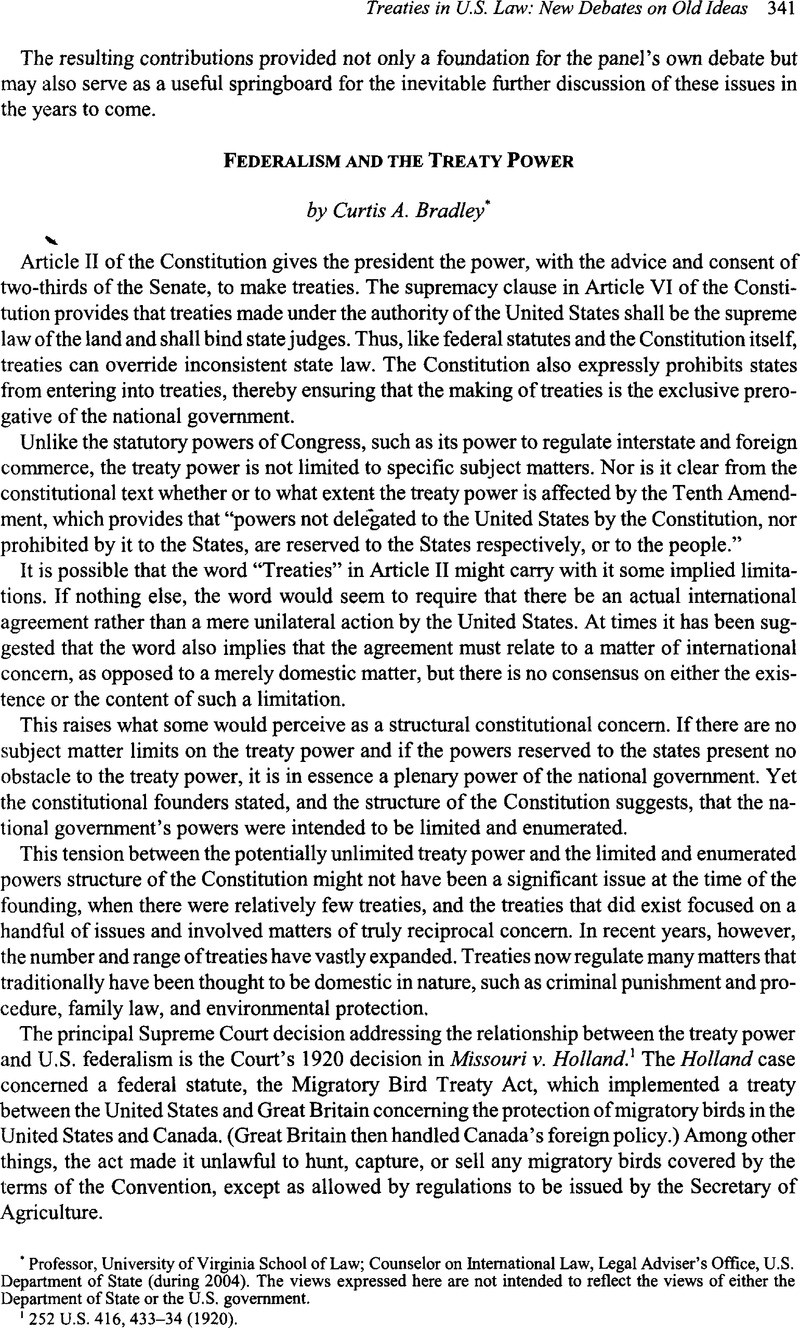No CrossRef data available.
Published online by Cambridge University Press: 28 February 2017

1 252 U.S. 416, 433-34 (1920).
2 Dicta in a recent Indian law decision by the Supreme Court could be read to suggest a continued commitment to this holding. See United States v. Lara, 124 S. Ct. 1628, 1633-34 (2004). That decision did not involve either a treaty or an issue of federalism, however.
3 521 U.S. 507(1979).
4 523 U.S. 371(1998).
5 For additional discussion of the relationship between the treaty power and U.S. federalism, see Bradley, Curtis A., The Treaty Power and American Federalism, 97 Mich. L. Rev. 390 (1998)CrossRefGoogle Scholar; Bradley, Curtis A., The Treaty Power and American Federalism, Part II, 99 Mich. L. Rev. 98 (2000)CrossRefGoogle Scholar; Golove, David M., Treaty-Making and the Nation: The Historical Foundations of the Nationalist Conception of the Treaty Power, 98 Mich. L. Rev. 1075 (2000)CrossRefGoogle Scholar; Swaine, Edward T., Does Federalism Constrain the Treaty Power?, 103 Colum. L. Rev. 403 (2003)CrossRefGoogle Scholar. See also Gary Lawson & Guy Seidman, The Constitution of Empire: Territorial Expansion and American Legal History, ch. I (2004).